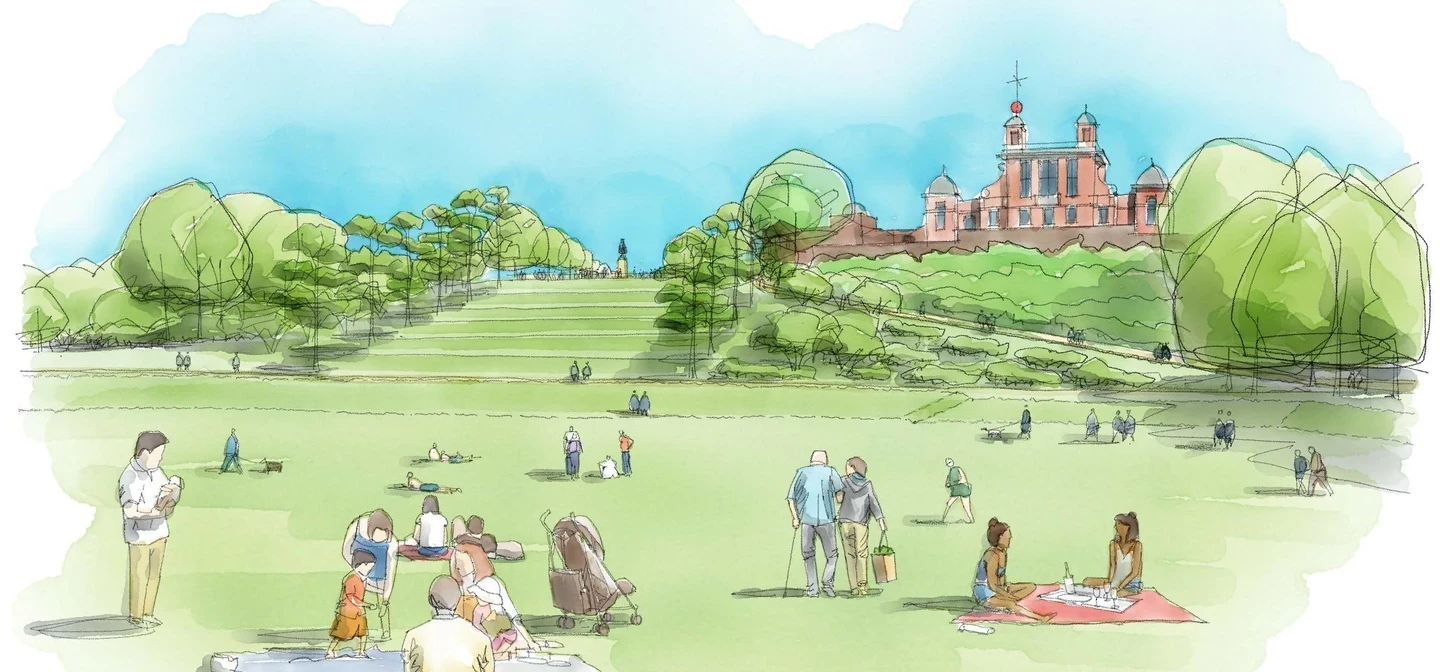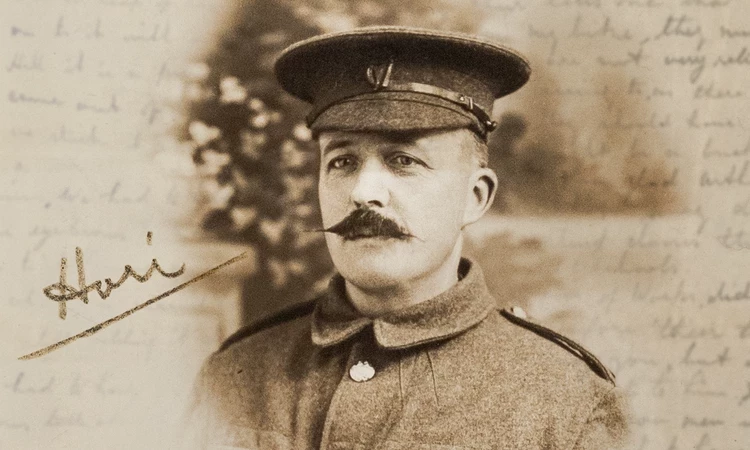
The Royal Parks embarks on restoration to save Greenwich Park’s lost 17th century landscape
The Royal Parks charity is embarking on a restoration of Greenwich Park’s disappearing 17th century landscape and damaged tree avenues, before the features are lost forever.
In carefully-managed phases, over three years, the charity will redefine the World Heritage Site’s eroded landscape and will simultaneously restore the declining tree avenues, with new, more resilient trees. The project will return the landscape to its original splendour, thanks to funding from the National Lottery Heritage Fund and Community Fund.
Works will begin in October 2022 and will be completed by March 2025.
The formal landscape was commissioned by Charles II in the 17th century. It comprises formal tree-lined avenues which frame the view from the Queen’s House, culminating in ‘The Grand Ascent,’ (giant grass steps on the hill to the Royal Observatory). It links the Thames to Blackheath Gate and beyond.
The formal terraced layout (called a parterre) was designed by French landscape architect André Le Nôtre, who is best known for designing the world-famous Versailles gardens, outside Paris.
But today, the landscape is severely eroded. Centuries of footfall and five million annual visitors have taken their toll. The ‘giant grass steps’ are barely discernible, and the ‘parterre’ banked terracing has slumped.
The tree avenues, which were planted with poor-quality Turkey oak trees in the 1970s, are severely squirrel damaged. They often host pests such as Oak Processionary Moth and Knopper Gall (which interferes with the reproduction of our native oak tree). Many Turkey oak trees have already died, leaving incomplete avenues.
The restoration will expertly remove the declining Turkey oak trees and a small number of badly damaged beech trees, 87 trees* in total.
The wood will be retained in the park to support wildlife, and all mature trees planted before 1970, will remain.
The charity will plant 92 new, more resilient, semi-mature trees - with a net gain of five avenue trees - providing long-term wildlife benefit. Flowering, nectar-rich lime and elm trees will support pollinators, including the endangered white letter hairstreak butterfly.
The avenues will provide a foraging habitat and movement corridors for birds, bats and other wildlife, for years. The landscape restoration will expand valuable acid grassland habitats, supporting birds and pollinators, such as ground nesting bees and wasps.
During the project, around 2,000 native, diverse and wildlife-friendly trees and shrubs will be planted across the wider park and woodland, boosting carbon dioxide absorption.
Graham Dear, Greenwich Park Manager, The Royal Parks, said:
“As park manager of 12 years there’s nothing more wonderful than seeing people enjoying this much-loved park – whether that’s to relax in nature, connect with others or to discover its history.
“Sadly, this landscape is threatened. If we don’t act now, the 17th century features could disappear forever. More Turkey oak trees will die, leaving avenue gaps and stumps, as trees are removed on a piecemeal basis.
“This park is all about people. Hundreds of years ago, this view was created to please a king. But today we’re restoring it for the enjoyment of everyone.”
Andrew Scattergood, Chief Executive, The Royal Parks charity, added:
“The restoration will revive, protect and future-proof this landscape, so that the local community can experience the view, right on their doorstep, as it was in its heyday, and be proud to call it ‘their back garden’.
“Our in-house specialists in landscape architecture, arboriculture, archaeology, and ecology are working closely with external experts, and in consultation with the local community to deliver this project to the highest standards of excellence.
“And thanks to the players of the National Lottery, this is a once-in-a-lifetime opportunity to protect a world-class setting for visitors locally and beyond, to create many wonderful new memories for centuries to come.”
The Greenwich Park Revealed project has been supported with a £4.8million Parks for People grant from The National Lottery Heritage Fund and The National Lottery Community Fund.
Stuart McLeod, Director England - London & South at The National Lottery Heritage Fund, said:
“We are thrilled to support the Greenwich Park Revealed project, thanks to money raised by National Lottery players.
“This landscape not only has huge historic significance but is also a well-used and loved green space within Greenwich – both for locals and visitors. Our parks are integral spaces for our communities – they offer a place for people to connect with nature, are important for health and wellbeing and make our communities better places to live.
“Supporting this ambitious project ensures the space will be saved so it can be enjoyed by visitors and its local community for many years to come.”
Emily Gee, Regional Director for London and the South East at Historic England, said:
“We have been working closely with The Royal Parks on the care of the precious historic landscape across all of their parks. We are delighted they are embarking on our shared vision to improve Greenwich Park’s 17th century landscape to its former glory.
“The restoration and interpretation of the formal Royal Landscape will complement the Queen’s House and we look forward to seeing revived tree avenues and repairs to the earthworks consisting of parterres and a Grand Ascent, a series of giant steps. A key aspect of the project is the appointment of a community archaeologist to oversee the main works and organise a series of community projects around the park.”
Related Articles
-
 Read
ReadThe Royal Parks looking for 30 Volunteer Rangers
The Royal Parks charity is looking for friendly volunteers who enjoy talking to people to become rangers in Greenwich Park.
-
 Read
ReadA digital exhibition about Hori Tribe
A digital exhibition about Hori Tribe, a propagator at Greenwich Park, who left to fight in the First World War.
-
 Read
ReadHori the Husband
Delve into heartfelt letters of a soldier's love, reassurance, and hopes for reunion with his family.

